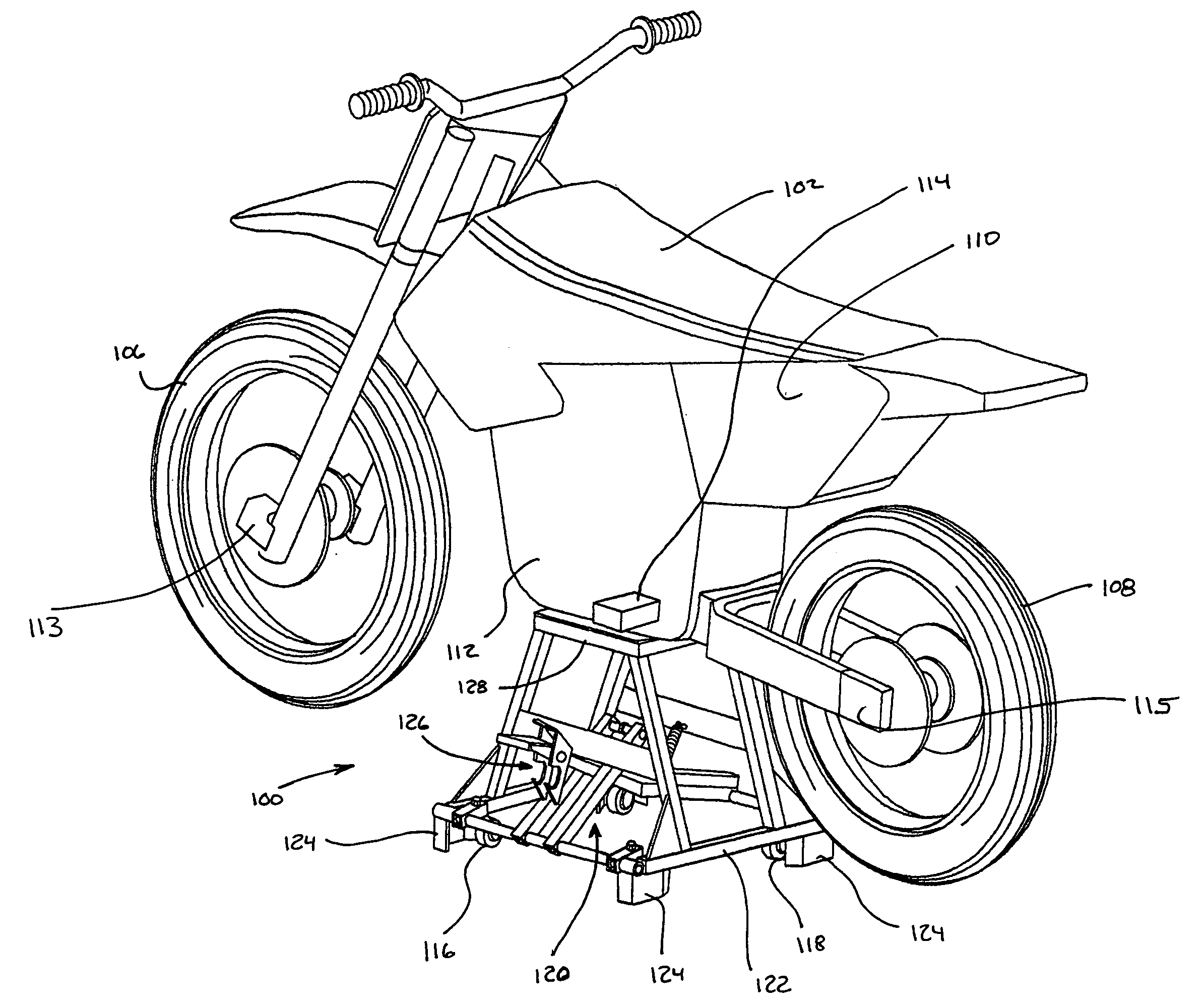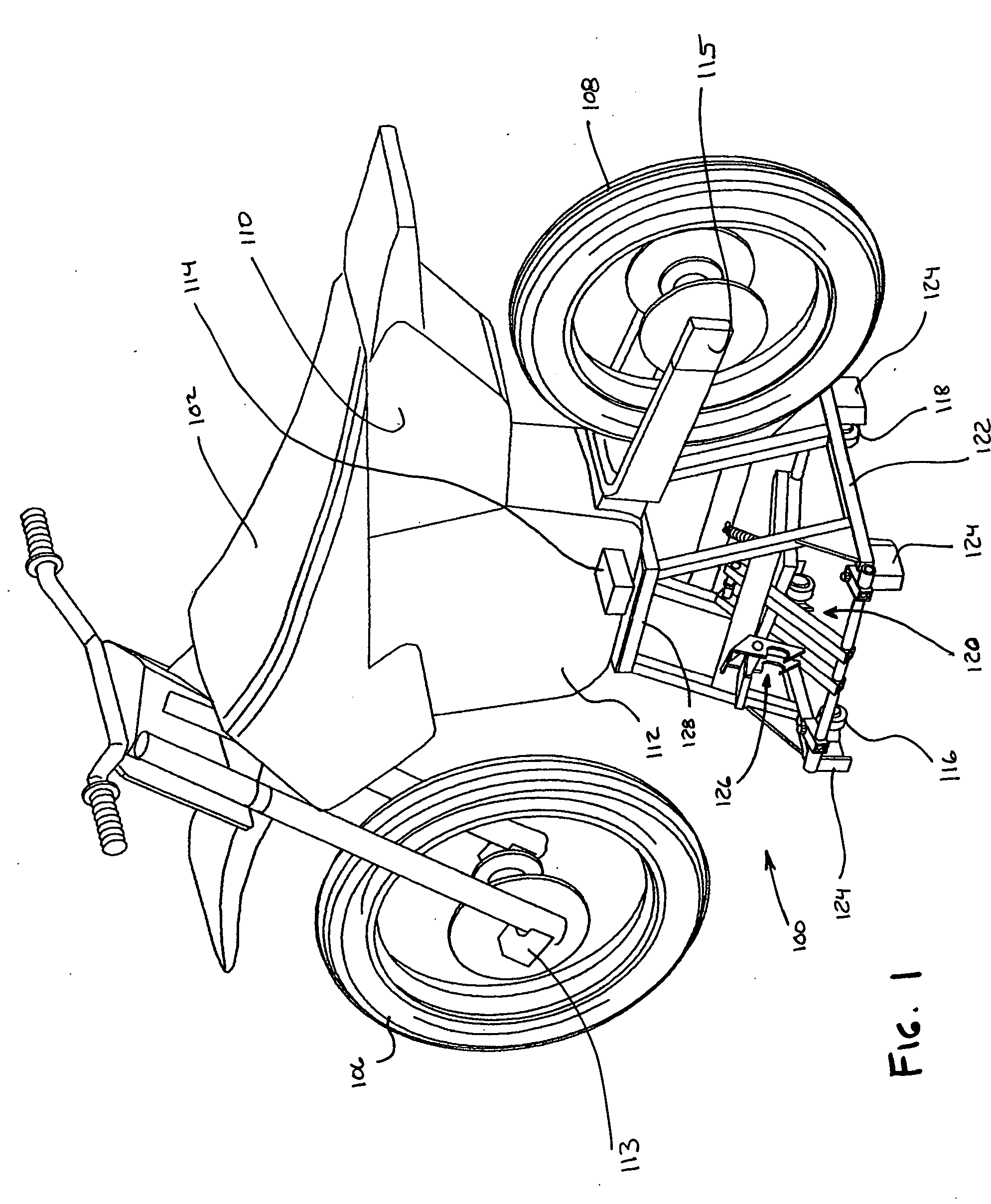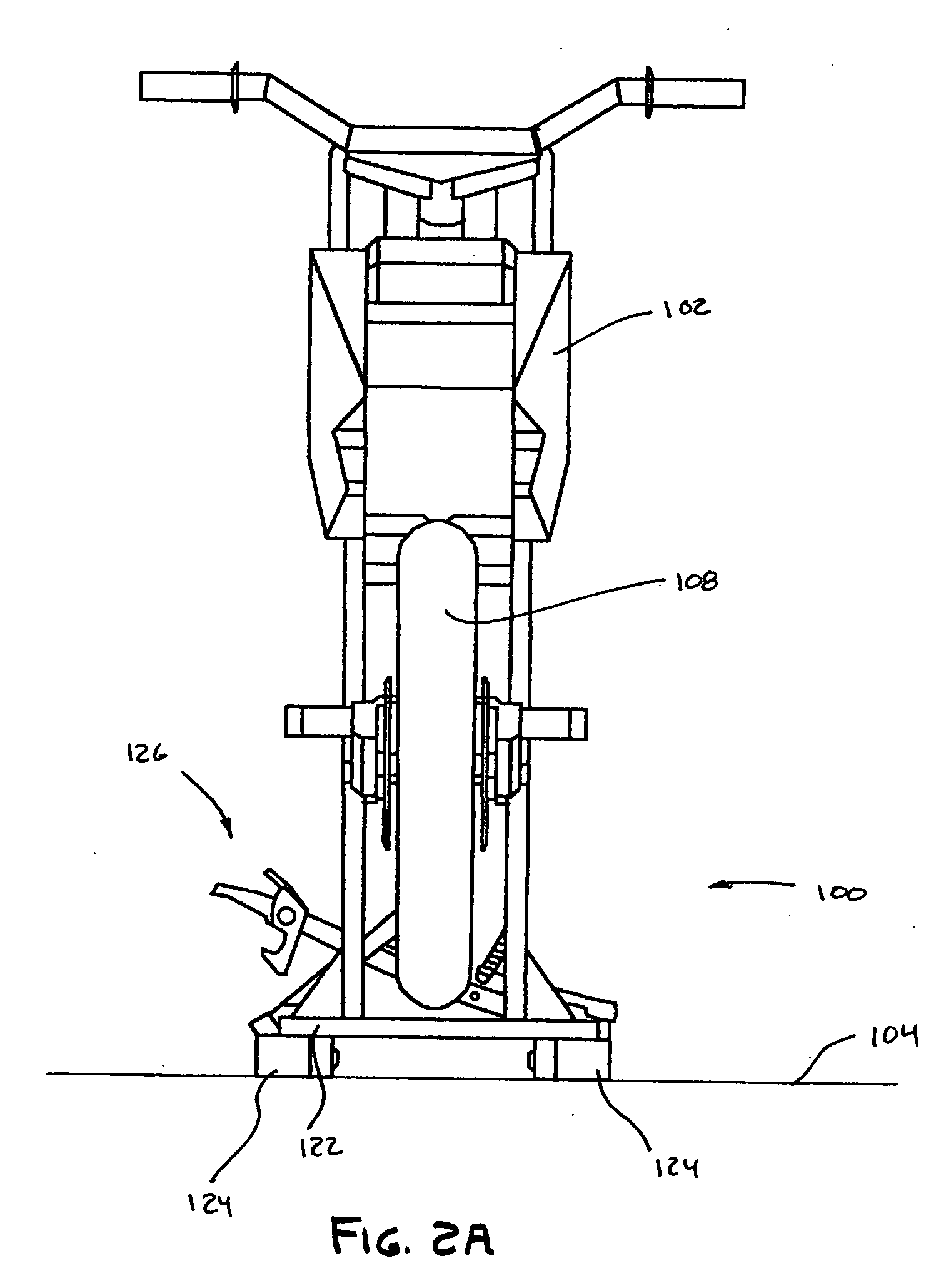Selectively movable motorcycle stand
a motorcycle stand and selectable technology, applied in the field of stands, can solve the problem that the stand or the lift base cannot be easily moved along the support surface, and achieve the effect of improving the service life and reducing the maintenance cos
- Summary
- Abstract
- Description
- Claims
- Application Information
AI Technical Summary
Benefits of technology
Problems solved by technology
Method used
Image
Examples
first embodiment
[0072]FIGS. 4A-6B show additional views of the stand shown in FIGS. 1-3C. More particularly, FIGS. 4A-4E illustrate various views of the stand in the stationary configuration, and FIGS. 5A-5E illustrate various views of the stand in the mobile configuration. As shown in FIGS. 4A and 5A, the stand 100 includes a stand top 128 connected with an upper portion 130 of the frame 122. The stand top 128 provides an area 132 upon which an object that is to be supported can be placed, such as a motorcycle. The upper portion 130 of the frame 122 is supported by and extends upward from a base portion 134. Although the frame is described and depicted below with a certain degree of particularity, it is to be appreciated that various embodiments of the stand can utilize other types of frame forms and structures and should not be construed to limit the frame to what is depicted and described herein.
[0073] As shown in FIGS. 4A and 5A, the base portion 134 of the frame 122 includes a right pivot supp...
embodiment 100
[0103]FIGS. 10A and 10B are right side cross sectional views of a first alternative embodiment of a stand 338 with a lift device 340 having a threaded crank shaft 342 that controls the movement of first and second threaded links 344, 346, which allows a user to place the stand 338 in the mobile and stationary configurations. More particularly, the threaded links 344, 346 are coupled with first and second lift mechanisms 348, 350, respectively, and as such, the movement of the threaded links in a particular direction cause the lift mechanisms to engage and / or disengage the wheels 116, 118 with the support surface. As described above with reference to the first stand embodiment 100, the first and second lift mechanisms 348, 350 shown in FIGS. 10A and 10B each include first and second lift axles 192, 256 pivotally coupled with the frame 122. In addition, the rear and forward caster wheels 118, 116 are coupled with the first and second lift axles, respectively, through caster wheel moun...
embodiment 450
[0124] As previously discussed, the stand embodiment 450 shown in FIGS. 14A and 14B provides linkage assemblies that maintain the caster wheel mounts in substantially vertical orientations as the wheels are engaged and disengaged with the support surface. It is to be appreciated that the wheels can be coupled with the frame and lift mechanisms in other ways to provide for similar caster wheel movements. For example, FIGS. 15A and 15B show an alternative manner in which the wheels can be coupled with the frame and the lift mechanisms. As illustrated, the connection post 224 of the caster wheel 208 assembly can extend upward through an aperture 486 in the frame 122. As such, the connection post 224 is adapted to slide up and down through the aperture 486 in the frame when placing the stand in the mobile and stationary configurations. FIGS. 15A and 15B also illustrate that the wheel assemblies 208 need not be connected directly with a lift mechanism 488, but instead, can be configured ...
PUM
 Login to View More
Login to View More Abstract
Description
Claims
Application Information
 Login to View More
Login to View More - R&D
- Intellectual Property
- Life Sciences
- Materials
- Tech Scout
- Unparalleled Data Quality
- Higher Quality Content
- 60% Fewer Hallucinations
Browse by: Latest US Patents, China's latest patents, Technical Efficacy Thesaurus, Application Domain, Technology Topic, Popular Technical Reports.
© 2025 PatSnap. All rights reserved.Legal|Privacy policy|Modern Slavery Act Transparency Statement|Sitemap|About US| Contact US: help@patsnap.com



